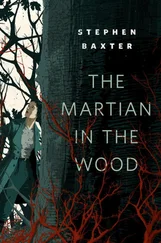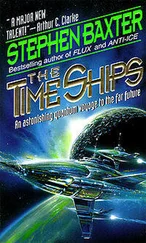But Reeve looked overtired, a little baffled, evidently disturbed by Maura’s presence here.
They both knew Maura had no formal influence here. The truth was she wasn’t even sure where she stood, now, on the issue of the children. On the one hand she clung to her promise to oversee Tom Tybee; on the other she was a member of a government responsible for protecting the wider public from danger. Was it possible those two motivations conflicted?
She only knew one way to figure it out, and that was to come see for herself.
And now here were the children themselves. They were scattered through the rooms, working individually or in little groups. The children stood, sat, or lay on the floor without self-consciousness. Many of the children wore cordless earpieces and worked at bright plastic softscreens. There were teachers, but mostly the children seemed to be working with teaching robots: cute, unthreatening little gadgets covered in orange fur or shiny velvet.
“We refer to these rooms as laboratories,” Reeve said. “The children have differing individual needs, levels of achievement, and learning paces. So we use the robots, individually programmed and heuristically adaptable.
“A lot of the work we do is remedial, you might be surprised to know. Some of the children don’t even have much speech, and even from here in the U.S. they are often subliterate. They have tended to be taken out of school, or thrown out, as soon as their special abilities are recognized.” She eyed Maura. “You do need to understand the difficulties we face. Many of these children display some of the symptoms associated with autism. There is a mild form known as Asperger’s Syndrome, or mad scientist syndrome. Such a child may be highly intelligent, and driven by an obsession that pushes her to extraordinary achievements. But at the same time she may be extremely clumsy and uncoordinated. Also socially clumsy. You see, we have to protect them from themselves.” She sighed. “In some cases the disorder may be more severe. Some of the children seem to have only a peripheral response to pleasure and pain. That makes it difficult to control them.”
“Because they don’t respond to punishment?”
“Or to hugs,” Reeve said severely. “We aren’t monsters, Representative.”
“I don’t see how you can dissociate evidence of a disorder like that from, umm, the bruises left by the handling some of these kids have received.”
“No. And we don’t try. You must believe, Ms. Della, that we do our best for the children here, as intellectuals, and as children.”
“And once they are past the remedial stage—”
“Once past that, they are very soon beyond us” Reeve sighed. “All we can do is monitor them, try to ensure their physical needs are met, and give them some elements of a rounded education. And we try to develop social skills.” Reeve eyed Maura. “Often we have to all but drag them to the games, to the yard, and teach them how to play. A child is a child, no matter how gifted.”
“I’m sure you’re right.”
“But it isn’t made easier by the experts who come here,” Reeve said severely. “Of course we understand, it’s part of our charter that the more advanced children are essentially performing original research, with results that might benefit the broader academic community. And we have to make their results accessible. But to have teams of academics trampling through here, quizzing the children and disrupting their general education, all for the sake of seeking out some new nugget of knowledge that can be written up and published under their names—”
Maura half tuned her out. This was obviously Reeve’s particular grievance, her hobbyhorse. What was Reeve really concerned about? The fate of the children here, in this rather sinister place, or the fact that the jackdaw academics clearly didn’t credit her in their papers and theses?
Each child wore a pale gold coverall, zipped up the front, with a blue circle stitched to the breast.
“Why the uniforms?”
“Everyone asks that. We call them play suits. We had to come up with something when the blue-circle identifiers became federal law. They’re actually very practical. They are made of smart fabric that can keep warm in winter, cool in summer… Actually the children seem to find the blue-circle logo comforting. We don’t know why. Besides, it does help us identify the children if any of them escape.”
Nevada. Barbed wire. Uniforms. Escape. This was a school, perhaps, but with a powerful subtext of a cage.
Reeve led her into another laboratory. There was equipment of some kind scattered around the room on lab benches. Some of it was white-box instrumentation, anonymous science-lab stuff, unidentifiable to Maura. But there were also some pieces of apparatus more familiar from her own school days: Bunsen burners and big chunky electromagnets and what looked like a Van de Graaff generator.
There were five children here, gathered in a circle, sitting cross-legged on the ground. One of them was Tom Tybee. The children didn’t have any tools with them, no softscreens or writing paper. They were simply talking, but so fast Maura could barely make out a word. One of the children was a girl, taller than the rest, her blond hair plaited neatly on her head. But it wasn’t clear that she was in any way leading the discussion.
“We call this our physics lab,” Reeve said softly. “But much of what the children seem to be exploring is multidisciplinary, in our terms. And if you can’t follow what they’re saying, don’t worry. If they don’t know a word, they will often make up their own. Sometimes we can translate back to English. Sometimes we find there is no English word for the referent.”
“Clever kids.”
“Little smart-asses,” Reeve said with a vehemence that startled Maura. “Of course most of what they do is theoretical. We can’t give them very advanced equipment here.”
“If it’s a question of budget—”
“Representative Della, they are still children. And you can’t put a child, however smart, in charge of a particle accelerator.”
“I suppose not.”
Watching the children talking and working, quietly, purposefully, Maura felt a frisson of fear: the superstitious, destructive awe she so reviled in others.
The question was, what were they working toward? What was their goal, why were they here, how did they know what to do? The questions were unanswerable, deeply disturbing — and that was without being a parent, without having to ask herself the most profound questions of all: Why my child? Why has she been taken away?
Perhaps, she thought uneasily, they would all soon find out. And then what?
“Hello, Ms. Della.”
Maura looked down. It was Tom Tybee. He was standing before her, straight and solemn in his golden suit. He was clutching an orange football shape.
Maura forced a smile and bent down to Tom’s level. “Hello, Tom.”
The taller blond girl had come to stand beside him. She was holding Tom’s hand and was watching Maura with suspicious eyes.
“Look.” Tom held out his toy to her. It was his Heart: an emotion container, a sound-vision recording device that enabled the user to record his favorite experiences. Maura wondered what he found to record here.
“My mom gave it to me.”
“Well, I think it’s terrific.”
Reeve said, “Representative Della, meet Anna. Our oldest student.”
The girl stared at Maura — not hostile, just reserved, wary.
“Can I go?” Tom asked.
Maura felt unaccountably baffled, excluded. “Yes, Tom. It was nice to see you.”
Tom, his hand still in Anna’s, returned to the group and sat down, and the rich flow of their conversation resumed. Anna joined in, but Maura noticed that she kept her gray eyes on her and Reeve.
Читать дальше
Конец ознакомительного отрывка
Купить книгу












